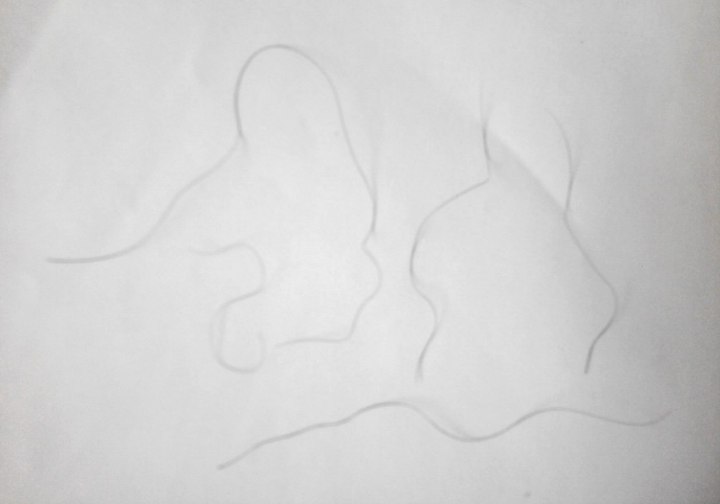Stress-Damaged Hair

Q: I have some concerns about my hair. I’m not sure if it’s becoming damaged or if it’s naturally developing a curly texture. My situation seems similar to the one described in the earlier question you addressed.
For most of my life, I’ve considered my hair straight. Not pin-straight, but generally straight with a slight wave. However, over the past three years, I’ve noticed some strands that are what I’ve started calling "super curly." When I gently run these strands between my thumb and index finger, they feel crinkly and make a faint sound, almost like crumpled paper.
The shape of these hairs resembles a longitudinal wave, as mentioned in the previous article, but with an unusual variation in thickness. The hair thins out at the curves while the peaks and valleys of the waves remain thicker. The curls vary in tightness. Some are very tight, forming waves every 2-3 millimeters, while others are looser, with waves spaced 4-5 millimeters apart. The pattern isn’t always uniform; some strands have irregular waves.
These curly strands can appear anywhere. Sometimes just at the tips, other times along entire lengths of hair. I’m not sure if they’re growing this way or if they’re changing texture over time. Interestingly, when I pluck one of these long, curly strands, the new baby hairs that grow back in the same spot also develop the same curly pattern. Plucking them causes moderate pain, which I find unusual since the rest of my hair is mostly straight (or slightly wavy at most).
Recently, I got a straight perm (does this damage hair?), and now 99.9% of my hair appears straight. However, I can still occasionally feel that same crinkly texture in certain strands, even though they’ve been straightened. What’s more, these straightened strands retain the thick-and-thin pattern where the curls used to be.
So, my question is: Is this hair damage, a natural change from straight to curly, or something related to the hair growth cycle (like transitioning into the shedding phase, as mentioned in the article)? For context, I shampoo my hair infrequently - once every few weeks at most, and never more than once a week - and I always use conditioner when I do. I avoid heat styling tools like blow dryers and flat irons. My mother also has a few of these "super curly" strands, which makes me wonder if it’s genetic. I included a photo for reference, though unfortunately, the most tightly curled strands aren’t visible in it.
That said, this doesn’t rule out the possibility that some of your hair may also be developing a new wave pattern due to natural changes in your hair follicles as you age. Hormonal shifts, genetics, or even environmental factors can influence hair texture over time. However, in this case, the specific strands in your photo seem to reflect damage rather than a natural curl pattern.
This type of damage often occurs when hair is subjected to excessive tension. For example, from aggressive brushing or combing, especially when dealing with tangles. If the hair is stretched or pulled too hard, the keratin structure can weaken, leading to those crinkly, uneven textures you’ve described.
As for your straight perm: Yes, chemical treatments do cause some degree of stress to the hair. A straight perm works by breaking and reforming the hair’s natural bonds to alter its shape. While this can give you the smooth look you want, it also makes the hair more vulnerable to dryness and breakage.
To minimize further damage, I’d recommend adjusting your hair care routine. Switch to sulfate-free, moisturizing shampoos, and use deep conditioners regularly to restore hydration. Since you don’t use heat tools, that’s a plus, but adding a leave-in conditioner or a protective serum can help strengthen your hair and shield it from environmental stressors like sun exposure or friction from fabrics.
If you continue to notice these crinkly strands, it might also help to detangle your hair gently with a wide-tooth comb while it’s wet and coated with conditioner to reduce mechanical stress.
©Hairfinder.com
See also: Damaged hair